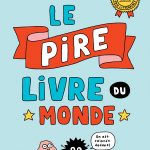Here are the sources that guided my inquiry project
Arnett, K., & Mady, C. (2010). A critically conscious examination of special education within FSL and its relevance to FSL teacher education programs. Canadian Journal of Applied Linguistics, 19–36. Retrieved from https://doaj.org/article/6e281336a84644aab23a192e8df39789
Summary: This text is one of the most relevant pieces of work I found related to my inquiry. This article focuses on the tension between FSL programs and the needs of students with disabilities or difficulties related to language learning, especially in the context of French Immersion. French Immersion has the reputation of being for an elite, and I think it is important to look at the causes of this idea, and the consequences of it.
Arnett, K., Mady, C., & Muilenburg, L. (2014). Canadian FSL Teacher Candidate Beliefs about Students with Learning Difficulties. Theory and Practice in Language Studies, 4(3), 447–457. doi: 10.4304/tpls.4.3.447-457
Summary: This article is interesting because it is data-driven and is based upon questionnaires filled by pre-service teacher. It gives me a window into the mindset of French Immersion teachers toward students with learning disabilities. It also tackles the question of cultural minority in classes and how teachers are more or less prepared to help them in their classes. It relates really well to my inquiry seeing that the authors wanted to open the conversation about how to better serve the specific needs of students and end discrimination in the French Immersion programs.
Arnett, K., & Mady, C. (2018). The Influence of Classroom Experience on Teacher Belief Systems. Revue Des Sciences De L’éducation De McGill, 53(3), 590–611.
Summary: This one is interesting because it follows 4 teachers of French Immersion during many years and looks at how experience may or may not influence changes in the teacher’s view in regard inclusivity and learning difficulties. We can also note that it is the third texts from the same researchers that I have included in my bibliography. I believe that following the evolution of their work and understanding the root of their research will give me a lot of valuable information for my inquiry.
Direction de l’éducation française. (2010). Faire une différence : répondre aux différents besoins en matière d’apprentissage à l’aide de la différenciation pédagogique. Edmonton.
Summary: This is a document produced by the Government of Alberta on inclusivity and differentiation in the classroom. I think it is a great baseline for me to learn more about differentiation and different approaches I can use in my classroom. Plus, the book also offers a whole chapter on how to help students in specific learning contexts, like French.
Joy, R., & Murphy, E. (2012). The inclusion of children with special educational needs in an intensive French as a second-language program: from theory to practic. Canadian Journal of Education, 35(1), 102–119.
Summary: This is also an important paper for my inquiry since it has put into practice a lot of the discussed ideas of inclusive classroom. The authors of the article used an activity system in 8 Grade 6 French Immersion classes to measure the impact of tools such as scaffolding, multiple modes of representing, and active learning.


